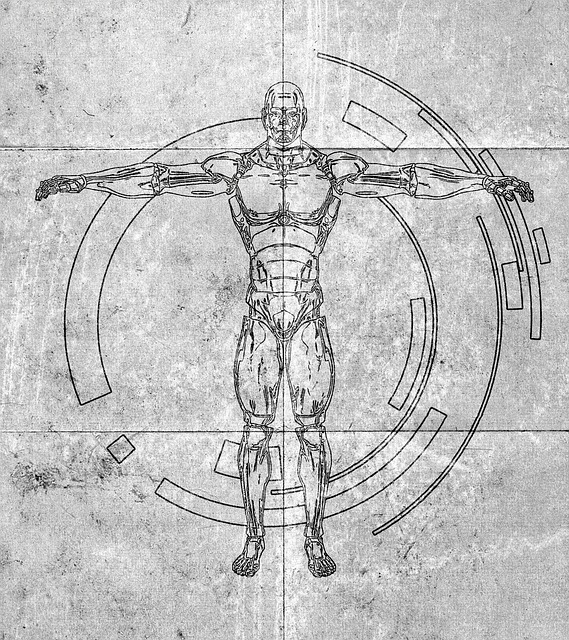In 1993, MIT launched Cog. Its main goal was to design and build a humanoid robot that is capable of speech, eye-coordinated movement, and a capacity to know about itself, and tell its designer what it has discovered in its self-exploring activities.
There were two reasons why it was important to develop a humanoid robot. First, researchers stressed that if a human-like intelligence will be developed, it will have to be represented in a human-like body. This idea hinged on the idea that much of the development achieved by humanity relied on the physical body. Hence, in order for the human-like intelligence to be able to develop the same capacity for inner thought and language as human beings, it must experience the human physical body. Only through his form, researchers believed, will the human-like intelligence be able to “imbibe” the human being’s capacity for internal thought and language.
Second, researches argued that in order for robots to interact and engage with human beings in order for it to able to gain experience and the capacity for human reasoning. If such a robot behaved in a human-like way, then people will naturally fall into interacting with it as if it were human. Through human interactions, it is hoped that humanoid robots will be able to learn what it meant to be a part of a society, and in essence, would complete its education in what it means to be human.
While Cog was retired in 2003, the search for the perfect robot to house human-like intelligence has not been forgotten.
In 2013, Google acquired Boston Dynamics, an engineering and robotics design company, whose funding was sourced mainly from military sources. During this time, Boston Dynamics’ most popular robot was BigDog, made to represent a dog. It had to capacity to self-balance and navigate a range of terrain. Meanwhile in 2013, Atlas, Boston Dynamics’ humanoid robot also had the self-balancing capacity of BigDog. Atlas, however, could climb using its hands and feet.
In 2016, roughly 2 years since Google acquired the company, Boston Dynamics unveiled an upgraded version of Atlas. The humanoid has become smaller, lighter, and more agile. It could do many things that no other robot could do in the world. It could open doors, walk in the snow, lift and place heavy boxes on shelves, and even stand up after face planting on the floor. For some who have no background in robotics, these achievements not at all sound spectacular. But imagine this: how many million years did it take for evolution to develop life form that could stand and balance on its own? Such a feat has been achived by human being in just a couple of years.
Why It Matters
What did you feel when you watched the 2016 demo of Atlas being pushed to the ground by its human creator? Did you squirm like we did? Did you feel as if your humanity was violated?
Watching that video, it immediately became clear to us what the Cog team was saying in 1993 – humans, at least those who know how to value other people, cannot help themselves from treating a humanoid robot as if it were a real person. Developing realistic robots like Sophia then is like us, building our own trap. In just a few years, we can expect debates about whether it is time to create basic rights for robots, as if emotions have the capacity to feel, think, experience [see What Is Consciousness? to understand why we think that machines could never have the capacity for inner experience]. This debate could become as large as the fight against racism or violence against women, and could potentially divide into even more factions.
On the other hand, there is the matter of Atlas, and the capacities it has achieved in just a few short years. In 2017, Atlas made news again because it has learned to backflip! How many humans can actually do that?
In 2018, just less than four months ago, Atlas was seen performing a parkour exercise which required it jump over a log and leap up the steps without breaking its pace.
Despite the fact that Google has sold off Boston Dynamics in 2017, research in the company continues. Because Boston Dynamics is mum on why it continues its research on humanoid robots, we can only assume that if Atlas is performing training exercises used by the military, then the possibility that it is being trained to replace human soldiers, is large. If this is the case, then one can say that the creation of a militarized AI is still underway, and they are making huge progress.
At this level, Atlas has already surpassed the physical capacity of a majority of humans – and it has only been a couple of years. Atlas does not yet have the human-level intelligence that will enable it to make decisions in real time, but when such an intelligence is developed, we can only imagine what it will accomplish. Let us hope that tech developers at Boston Dynamics are not yet toying with the idea, not when automatic decision systems (ADS) powered by AI are ridden with biases [see The Biases That Can Be Found In AI Algorithm].
Atlas is a testament to the kind of technology that we have today. Human-like intelligence is possible within our lifetime. What kind of future then should our children expect?
Read Original Article

Read Online
Click the button below if you wish to read the article on the website where it was originally published.

Read Offline
Click the button below if you wish to read the original article offline.
You may also like
-
WEF Launches Metaverse, Predicts Digital Lives Will Become More Meaningful Than Physical Lives
-
Jeff Bezo’s Startup Hires Top Scientists To Defeat Death
-
The 2045 Movement And The Many Paths Towards Human Immortality
-
Will There Be Room For Religion In A Metaverse?
-
The Fourth Industrial Revolution: Its Risks and Benefits
